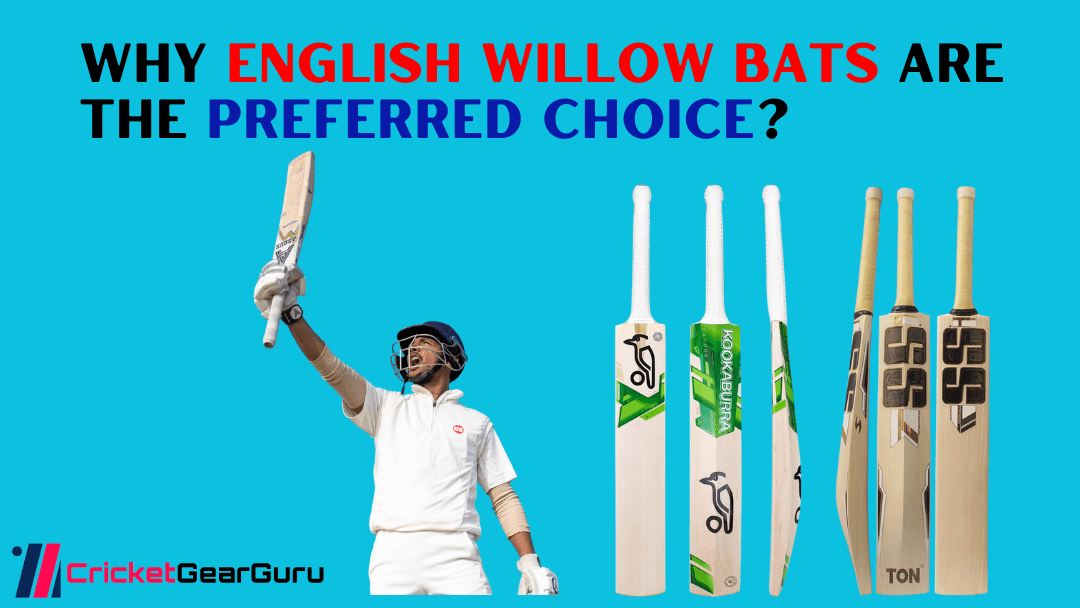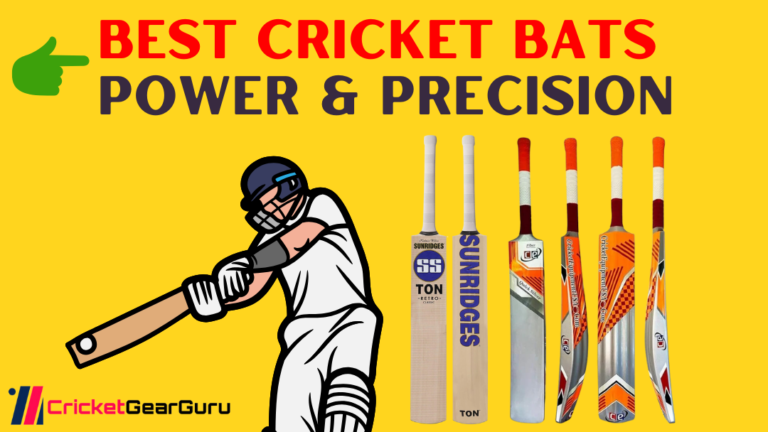Ah, English willow cricket bats—there’s something special about them! If you’ve ever watched a cricket match, you might have noticed the players wielding these beauties, and let me tell you, there’s a reason they’re the go-to choice for both amateurs and pros alike. I remember the first time I held an English willow bat; it felt like holding a piece of art! The balance, the weight… it was like it was made just for me.
Introduction to English Willow Cricket Bats
So, what’s the big deal about English willow? For starters, the wood comes from the Salix alba tree, which is native to England. This type of willow is known for its unique combination of lightness and strength, making it perfect for crafting cricket bats. I’ve had my fair share of bats made from other materials, but nothing compares to the feel of a well-crafted English willow bat. They absorb shock beautifully, which means fewer vibrations in your hands when you hit the ball. Trust me, that’s a game-changer, especially if you’re playing for hours.
What Makes English Willow Cricket Bats Special?
First off, let’s talk about the material itself. English willow, or Salix alba, is renowned for its unique fibrous structure. This isn’t just any wood; it’s specifically grown in certain regions of England that have the right climate and soil conditions. The trees are usually planted in areas with cool temperatures and plenty of rainfall, which helps them grow slowly and develop that perfect density. The result? A lightweight bat that packs a punch! Seriously, if you’ve ever swung a bat made from English willow, you know exactly what I mean. It feels almost effortless to hit the ball.

I remember my first season with an English willow bat. I was amazed by how much power I could generate with just a flick of my wrist. It’s like the bat has a mind of its own, sending the ball soaring effortlessly into the sky. This is largely due to the way the fibers are arranged. They allow the bat to flex upon impact, creating that delightful trampoline effect that cricketers crave. The sweet spot feels like it’s practically begging for the ball to come and meet it!
Now, let’s get into the durability factor. While it’s true that English willow bats require a bit more care and attention compared to cheaper alternatives (like Kashmir willow), they tend to last much longer when properly maintained. I learned this the hard way after neglecting the knocking-in process on my first bat. After a few matches, I noticed some cracks and a rather sad face. Lesson learned! But when you look after your English willow bat, it can perform beautifully for several seasons.
One of the things I absolutely love about English willow bats is their aesthetic appeal. There’s just something about the rich, natural grain patterns that make each bat feel unique. The craftsmanship involved in shaping and finishing these bats is nothing short of art. I’ve met bat makers who pour their hearts into each piece, handcrafting them with the utmost care. You can almost feel the passion radiating from the wood when you hold it in your hands.
And let’s not forget about the feedback. When you hit the ball with an English willow bat, you get a satisfying thwack that resonates through your arms. It’s a bit like a conversation between the bat and the ball. You can feel exactly where you hit it, and that feedback helps you refine your technique. I can’t tell you how many times I’ve adjusted my stance or swing after feeling that connection.
Of course, the choice of bat comes down to personal preference, but many professionals swear by English willow for a reason. It’s not just about the performance; it’s about the experience. The feel of the bat in your hands, the sound of the ball hitting the sweet spot, and the joy of seeing the ball race to the boundary are all part of the magic.
Types of English willow cricket bats
Grade 1 English Willow Cricket Bats
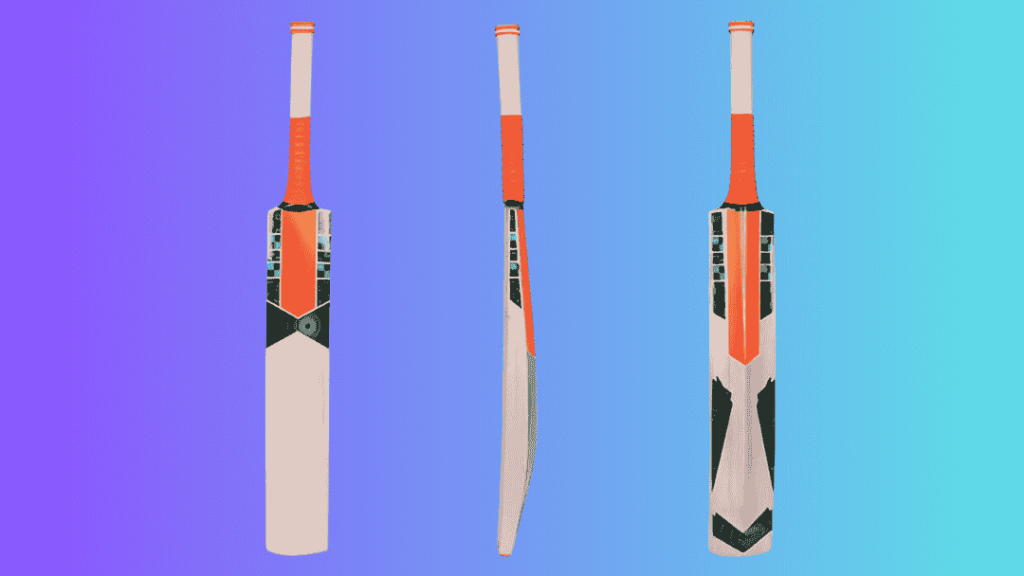
This is the crème de la crème of English willow bats. Grade 1 willow is made from the highest quality trees, resulting in bats that have an excellent balance of weight and power. There are usually 6-12 straight grains visible on the face of the bat, and they often come with a butterfly sticker (a mark of premium quality). I remember using a Grade 1 bat during a local tournament, and it felt like I was wielding a magic wand. The sweet spot was just phenomenal! If you can afford it, go for a Grade 1 bat as they provide the best performance.
Grade 2 English Willow Cricket Bats
Now, don’t get me wrong—Grade 2 bats are still fantastic! They have fewer grains (around 4-6), and while they may have some minor blemishes or knots, they still deliver excellent performance. I once bought a Grade 2 bat because I was on a budget, and it served me well for several seasons. The performance was solid, and I even managed to hit a few centuries with it. So, if you’re starting out or just looking for a reliable bat without breaking the bank, Grade 2 could be your perfect match.
Grade 3-5 English Willow Cricket Bats
These bats are more affordable and aimed at recreational players or beginners. They often have more imperfections and fewer grains (1-3), but they can still be quite effective, especially if you’re just getting your feet wet in the sport. I remember my friend bought a Grade 3 bat, and while it wasn’t as pretty, it got the job done during our weekend matches. It’s a great way to learn the ropes without investing too much.
Custom English Willow Bats
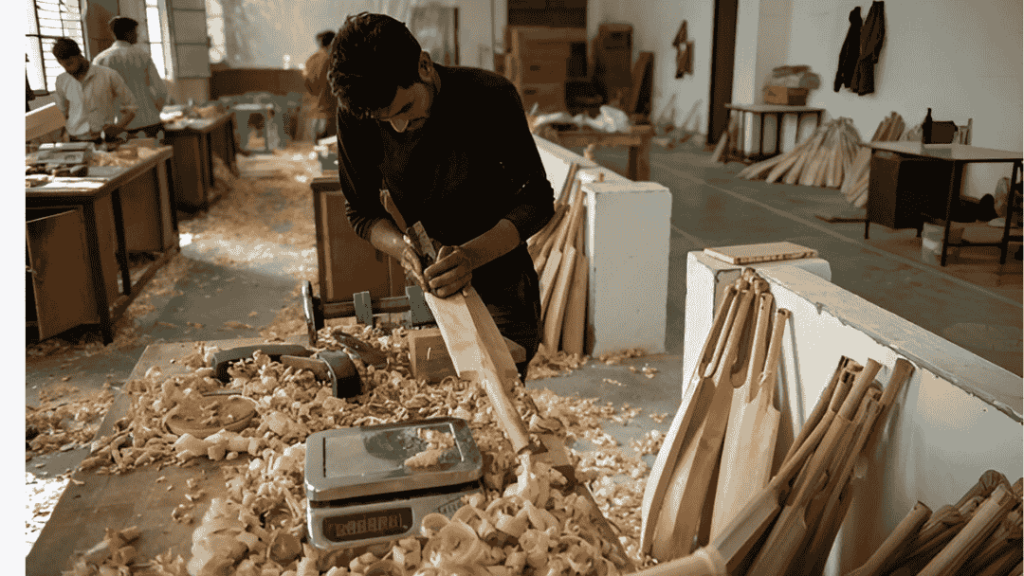
If you’re really serious about your game, you might want to consider a custom bat. This is where you can choose the size, weight, and even the grain pattern to match your playing style. I once had a bat custom-made, and it was like having a tailored suit! It felt just right, and I could feel the difference in my swing. Sure, it can be pricey, but for those who play at a competitive level, it’s worth every penny.
Now, one thing to keep in mind is the weight of the bat. Bats generally range from light (around 2.7 lbs) to heavy (up to 3.2 lbs). The lighter the bat, the easier it is to maneuver, especially for quick shots. I made the mistake of buying a heavier bat once, thinking it would give me more power. Instead, I struggled to keep up with the quick bowling. So, make sure to find a weight that feels comfortable for you.
Finally, don’t forget about the handle type! There are two main types: oval and round. Oval handles provide better control, while round handles are great for power hitters. I’ve switched between the two styles, and honestly, it all comes down to personal preference.
The Craftsmanship Behind English Willow Bat
The Art of Selecting English Willow
The journey of crafting an exceptional cricket bat begins with the careful selection of English willow (Salix alba var. caerulea). This specific variety is prized for its lightweight yet durable properties, making it the gold standard for professional-grade cricket bats. The selection process is meticulous, involving a grading system that assesses both visual and performance characteristics of the wood.
The process starts long before any actual bat-making begins. The English willow trees (Salix alba) need to grow for about 12-20 years before they’re ready for harvesting. What I found fascinating is how experienced bat makers tap the wood to assess its quality. The sound it produces can reveal a lot about its density and potential for performance.
Once the right clefts are chosen, they undergo a drying process that can last anywhere from 2 to 12 months. I remember how a master bat maker once said,
“You can’t rush nature.”
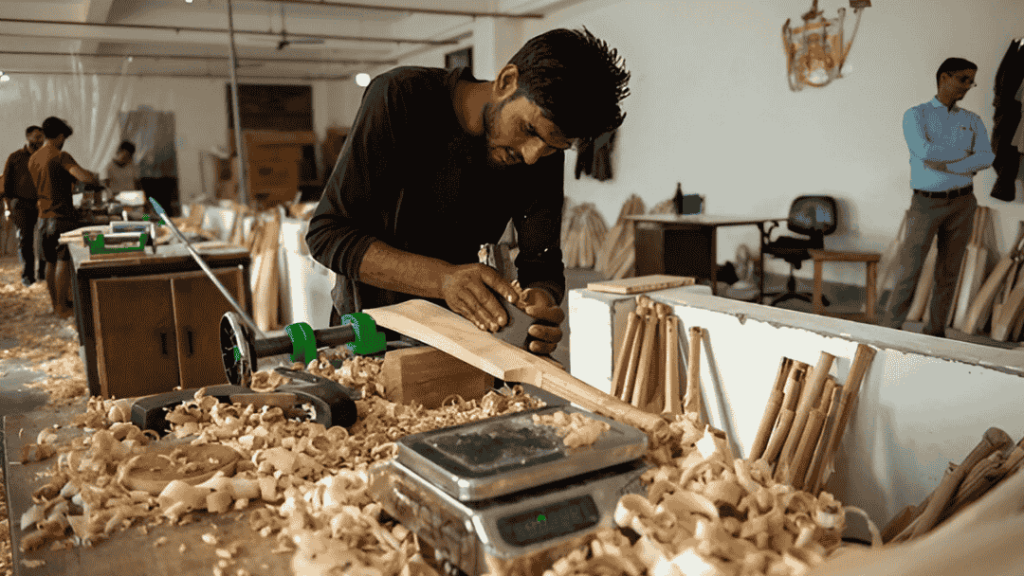
This drying is crucial, as it ensures the wood retains its strength and durability. After drying, the clefts are pressed using traditional and hydraulic presses. This compression is essential for enhancing the bat’s performance, allowing it to withstand the impact of high-speed balls.
Shaping the bat is where the magic happens. Using classic tools like planes and drawknives, craftsmen meticulously carve the bat, paying close attention to the grain.
The spine of the bat is also critically important. A well-defined spine provides strength and aids in performance. The handle fitting is equally vital; the splice where the handle meets the blade must be flawless to maintain the bat’s integrity.
Finally, each bat undergoes rigorous quality control. Craftsmen test for sweet spots with the classic “ping test,” bouncing a ball on different parts of the blade. This meticulous attention to detail ensures that every bat meets high-performance standards.
In the end, when you hold an English willow bat, you’re not just holding a piece of sports equipment; you’re experiencing the culmination of skill, tradition, and dedication.
Grading and Quality Assessment
English willow is typically graded from Grade 1 to Grade 5, with Grade 1 representing the highest quality
The english willow bats grading criteria include:
- Grain structure: Straight, evenly spaced grains are highly desirable.
- Presence of blemishes: Minimal knots or marks are preferred.
- Redwood or butterfly stain: The amount of these natural colorations affects grading.
Interestingly, while higher grades often indicate better performance, lower grades can still produce excellent bats when properly crafted and maintained.
How to Choose the Perfect English Willow Bat
Choosing the perfect English willow cricket bat can feel like a daunting task, especially with so many options available. So, let me share some tips I’ve learned over the years that can help simplify the process for you.

Understand the Grades
First things first, you need to familiarize yourself with the different grades of English willow bats. As we discussed earlier, they range from Grade 1 to Grade 5. Grade 1 bats are the top-tier, perfect for serious players. If you’re just starting out, a Grade 3 or 4 bat can be a great budget-friendly option while still providing decent performance. I made the mistake of going for a Grade 1 bat too soon, and while it was beautiful, I wasn’t quite ready to appreciate its capabilities.
Consider Your Playing Style
Next, think about your batting style. Are you an aggressive player who loves to hit boundaries, or do you prefer a more defensive approach? For aggressive players, a bat with a higher spine and larger edges, often found in modern profile bats, can give you that extra power. If you’re more of a classic batsman, a traditional profile with a larger sweet spot might be your best bet.
Check the Weight
The weight of the bat is another crucial factor. Generally, lighter bats allow for quicker bat speed, while heavier bats can provide more power. To find the right weight, pick up a few bats and swing them around a bit. It should feel comfortable and balanced in your hands.
Lenght Matters
Don’t overlook the length! The right bat length depends on your height and stance. A bat that’s too long can hinder your shot-making, while one that’s too short might not provide the reach you need. A good rule of thumb is to hold the bat vertically next to you; the handle should reach your waist. If you’re unsure, many shops allow you to test the bat to see how it feels in your hands.
Test The Sweet Spots
When you’re ready to make a decision, it’s essential to test the sweet spot. Give the bat some practice swings and hit a few balls if possible. The bat should feel comfortable, and you should notice that sweet sound when you hit the ball in the right spot. I remember the first time I found a bat where the sweet spot just felt “right.” It was a game-changer for me!
Don’t forget the budget
Lastly, keep your budget in mind. While it’s tempting to splurge on a high-end bat, there are plenty of mid-range options that provide excellent performance. You want a bat that fits your game without breaking the bank. I’ve learned that sometimes, a good-quality Grade 2 bat can serve you just as well as a fancy Grade 1, especially when you’re still developing your skills.
Choosing the perfect English willow bat doesn’t have to be stressful. Take your time, do your research, and don’t hesitate to ask for advice from experienced players or shop staff. Remember, every player is different, and what works for one may not work for another. So, trust your instincts, enjoy the process, and soon you’ll find that bat that feels like it was made just for you. Happy batting!
Benefits of using an english willow cricket bat
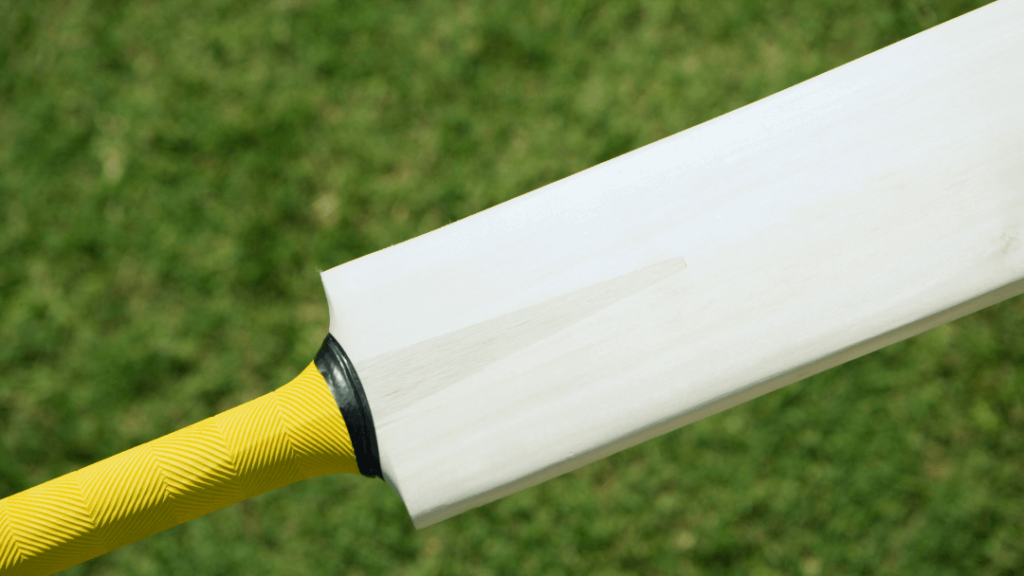
✅️ Lightweight and Durable: English willow is known for its excellent strength-to-weight ratio, making the bat lightweight yet durable, allowing for better swing speed and control.
✅️ Superior Shock Absorption: The natural fibers of English willow provide excellent shock absorption, reducing the impact on your hands when striking the ball.
✅️ Enhanced Performance: With a larger sweet spot and responsive hitting surface, English willow bats offer improved performance, allowing for powerful shots and better placement.
✅️ Customizable Options: Many manufacturers provide customization options, allowing players to tailor the bat to their specific preferences in weight, handle shape, and balance.
✅️ Traditional Craftsmanship: The craftsmanship behind English willow bats combines traditional techniques with modern innovations, ensuring high-quality production and unique designs.
✅️ Aesthetic Appeal: English willow bats often feature beautiful grain patterns, making them visually appealing while also being functional.
✅️ Sustainability: Many brands focus on sustainably sourcing English willow, promoting eco-friendly practices in cricket bat production.
✅️ Player Preference: Widely used by professional cricketers, English willow bats have gained a reputation for quality, making them a trusted choice among players at all levels.
Top English Willow Cricket Bat Brands to Consider
To save you some time, here are some of the most popular brands delivering high-quality cricket bats around the world:
➤ Gray-Nicolls – A classic brand known for quality and innovative designs.
➤ Kookaburra Cricket Bats – Offers a range of bats favored by many international players.
➤ Gunn & Moore – Offers durability, lightweight designs, and incredible stroke play.
➤ SS Ton – A go-to for players who want the best grain patterns in powerful bats.
➤ Puma: Known for their lightweight bats and striking aesthetics.
➤ New Balance: Offers high-quality bats with a focus on balance and feel.
How to care for your english willow bat
Caring for your English willow cricket bat is essential to ensure its longevity and performance. Trust me, I’ve learned this the hard way, so here are some key tips to keep your bat in top shape:
knocking-in
Before using your bat for the first time, it’s crucial to knock it in. This process involves gently hitting the bat’s face with a mallet to compress the fibers and prepare it for the impact of the ball. I made the mistake of skipping this step once, and my bat quickly showed signs of damage. Spend a few hours knocking-in, focusing on the edges and the sweet spot.
oiling
Regularly applying linseed oil helps maintain the bat’s moisture levels. A light coat every few months will protect the wood from drying out and cracking. Just a few drops on a cloth, rubbed into the bat, goes a long way!
store properly
Always store your bat in a cool, dry place, away from direct sunlight and extreme temperatures. I once left mine in the car on a hot day, and it warped slightly. Use a bat cover for added protection, especially when transporting it.
Avoid water exposure
While English willow is durable, it’s not waterproof. Avoid exposing your bat to damp conditions or rain. If it does get wet, dry it immediately with a soft cloth and let it air dry away from heat sources.
Inspect regularly
Keep an eye on your bat for any signs of wear and tear. Look for cracks, dents, or loose handles. I learned the hard way that ignoring small issues can lead to bigger problems. If you notice any damage, it’s best to address it promptly.
Use the Right Balls
Using the appropriate cricket balls for your bat is crucial. Harder balls can cause more wear. I’ve found that practicing with softer balls can help preserve the bat’s condition.
Avoid Using it as a Tool
This might sound obvious, but I’ve seen players use their bats for things like tapping stumps or opening drinks. Avoid using your bat for anything other than batting! It’s not a tool; it’s a finely crafted piece of equipment.
By following these simple care tips, you can significantly extend the life of your English willow bat and ensure it performs at its best for many seasons. Treat it well, and it will reward you with great performance on the field!
FAQs About English Willow Cricket Bats
What is English willow?
English willow (Salix alba) is a specific type of wood used for making high-quality cricket bats. It is known for its lightweight, durability, and excellent shock absorption properties, making it a preferred choice among professional players.
How long does an English willow bat last?
With proper care and maintenance, English willow bats can last several seasons. However, their lifespan can vary depending on usage, playing conditions, and how well they are maintained.
Why are English willow bats more expensive?
English willow bats are usually pricier due to the quality of the wood and the craftsmanship involved in making them.
How do I know my bat’s grade?
Check the grain count, straightness, and finishing quality to identify your bat’s grade.
What’s the difference between English willow vs. Kashmir willow?
English willow offers better shock absorption, grains, durability, and stroke play than Kashmir willow, which is suited for beginners.
Do English willow bats need knocking-in?
Yes, knocking in is essential for preparing your bat for use. This process helps compress the wood fibers, increasing durability and performance.
What are the different grades of English willow bats?
- Grade 1: Top quality, few blemishes.
- Grade 2: Good quality, some imperfections.
- Grade 3: Average quality, more visible flaws.
Can I customize my bat?
Yes, many brands offer customization options, including shape and weight adjustments.
How often should I service my cricket bat?
It’s advisable to service your bat at the end of each season to ensure it remains in good condition.
final thoughts on english willow cricket bats
It’s clear that they hold a special place in the hearts of cricket enthusiasts and professionals alike. The unique properties of English willow, such as its lightweight nature and excellent shock absorption, make it the preferred choice for players seeking both performance and comfort.
Understanding the various grades, proper care techniques, and the craftsmanship involved in their creation can significantly enhance your experience and performance on the field. Embrace the passion, the history, and the excitement that come with it, and let your English willow bat glorify your love for cricket.

